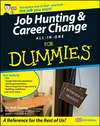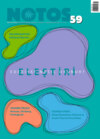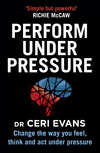Kitabı oku: «Perform Under Pressure», sayfa 6
Going APE vs Deciding to ACT
APE
Under pressure we all fail in predictable ways.
We’ve looked at how the same emergency reactions seen in animals – fight, flight or freeze – are triggered in modern-day performance situations, although usually more by social threats than physical danger. To help us translate them from the animal kingdom to our world of performance, let’s modernise the behaviours by renaming them.
Rather than fight, think aggressive. Under pressure, people raise their voices, threaten, bully, confront, insult, reject and exclude.
Rather than flight, think escape. Under pressure, people remove themselves from the fray by being late or not turning up, taking sick leave, resigning, or getting sent off the sports field.
And rather than freeze, think passive. People who can’t get out of a situation may not go completely immobile, but they go quiet and look down when volunteers are requested, always letting others go first and staying a step behind, just generally going through the motions.
For my money, the passive reaction is the invisible killer of performance. People can hide in plain sight by being present and operating at a minimum standard, doing just enough to avoid drawing attention to themselves as not contributing. It’s a silent epidemic that can completely undermine a team dynamic.
Many team-sport athletes know this type of player: the one who is on the field but never really gets their hands dirty, and always seems to be one step off the pace. Large organisations are often full of people who say the right things but whose actions lack impact.
Sometimes the passive state can be misread as being relaxed: a basic but common error in the sports world. Unless we are an animal playing dead and hoping to escape, it is a poor performance state.
These three styles of behaviour, aggressive, passive and escape – APE – are the three most unhelpful reactions we have under pressure. They all arise from RED, high-arousal reactions; even the passive reaction, involving low arousal, follows an initial high-arousal spike. The APE acronym reminds us that we share these responses with most members of the animal kingdom – and they are most definitely within us all.
In our early years, we all develop a personal pattern that means one of these three becomes our default reaction to extreme pressure. Or it might be a combination of two, or all three. Passive–aggressive behaviour is a classic example.
Recognising our personal defensive behaviour style and how it hurts our performance will show us what traps to avoid in the future. If we take this step, we are already in a stronger position to perform under pressure.
What APE pattern do you default to when you fall apart under pressure – A, P, E, or a deadly combination?
ACT
Under pressure we all succeed in predictable ways.
Peter is a foreman leading an expensive new house build that is just three weeks out from the date when the owners expect to move in. His team is facing pressure on several fronts. The architect has identified a large area of plastering that will need to be redone. One of Peter’s senior builders has had an accident onsite, which has triggered a health and safety investigation and left Peter short-handed. Plus, Peter’s usual subcontracting electrician isn’t available because of a family bereavement, and the replacement is not fitting in well with his team. On top of that, there’s been an extended spell of poor weather.
It would be very easy for Peter to fall into APE behaviours that block progress instead of moving his team forward. The pathway ahead, though, is clear.
First, he needs to stay aware of his internal reactions, to limit any APE behaviours. It won’t help for him to go deep RED right now!
Second, he needs to be clear about the proper process for the health and safety investigation, the repair timeline for the plasterers, and his expectations of the replacement electrician.
Third, he must stay on top of his crew and make sure that each task is finished calmly and efficiently, so that they get the house built on time.
This aware–clear–task sequence – or ACT – stands in contrast to the RED-fuelled APE reactions, which are characterised by lack of self-awareness, lack of clarity, and off-task behaviours. No matter how big the moment of pressure, we are well served by an ACT approach because it leads to specific actions that create movement.
ACT needs our BLUE mind to fire strongly. Because the BLUE mind is linear, it loves short sequences, so the three ACT steps are a good fit. (As we’ll discover, the RED–BLUE tool is based on the very same sequence.)
To be aware requires us to step back and reflect, which is a core BLUE-brain activity. Once we have a good idea of our external situation and our personal reaction to it, we can ensure we’re clear about what needs to be done first, and how to do it. Plenty of people start doing things without being aware and clear, and so the impact of their actions is diluted. There’s a lot to be gained from a deliberate process of considering alternatives and consequences before deciding to act.
Once we’ve made our decision, we can carry out our task accurately. If we are aware and clear, there is no doubt or vagueness to divert us, and our actions will have impact.
BLUE-based ACT responses are based on a desire to function better in challenging situations, while RED-driven APE reactions are based on getting out of threatening situations.
When we are in the zone, we will already be in an ACT state of mind. But for the majority of our lives we need a simple set of steps to follow under pressure. The great thing is that by not concentrating on getting into the zone and just following the process, we are more likely to end up in the zone anyway.
The ACT sequence is intended for repeated use because most performances involve a series of separate challenges. Aware provides our personal overview of the situation. Clear gives us a strategy to put into action. And task gets us going.
Instead of reacting to pressure defensively with APE behaviours, we can use the ACT sequence to face the pressure, and find a way to adapt and move forward.
It wouldn’t make sense to bury ourselves in the task without constantly reviewing our context and strategy. Every time we check on the context, we can adjust our strategy. Every time we adapt our strategy, we can adjust our actions. And every time we act, the context changes slightly, so we can circle back to the top. A key mental building block for performance under pressure is flexibility.
Choose a recent moment when you had to step up under pressure, and did. Can you recognise a moment when you put a stop to your APE behaviour, and got a grip on your reaction to the context (aware), formed a strategy (clear) and went to work with conviction (task)? If so, you’ve already intuitively discovered the ACT structure and applied it successfully.
ESC-APE vs IMP-ACT
ESC-APE
Some moments are just too big for us.
Sometimes, under pressure, we hit our threshold, and it’s then that our damaging APE behaviours emerge.
Most pressure arises from our fear of possible judgment. And the key elements of judgment are expectations, scrutiny and consequences (ESC).
Before we perform, people are expecting us to reach a certain standard. During our performance, we are scrutinised, often publicly. And afterwards, the quality and outcome of our performance will have consequences.
Sometimes we will be affected by one element more than the others, but generally they work together as a tight, inescapable sequence. As the level of expectations, scrutiny and consequences rises, so does the pressure. And it works in the opposite direction: if expectations, scrutiny or consequences are reduced or taken away, pressure evaporates.
More expectations and scrutiny always mean bigger and wider-ranging consequences. These consequences extend beyond success and failure to include material outcomes such as salary increases and promotion. And these material outcomes are rocketed upwards by media reactions and – perhaps the ultimate judgment – the impact on our reputation. The higher the level we are operating at, the more we have to lose through consequences.
Not all moments are equal. Every elite performer has had moments that carried greater significance, when they failed to cope.
Most people, when they go to work or undertake an activity, are not looking for ESC. In fact, most people try to avoid judgment as much as possible. The less ESC there is, the more comfortable they are. This returns us to the idea that operating when we are uncomfortable is at the heart of performance under pressure.
The external origins of pressure – ESC – plus the most unhelpful behaviours under pressure – APE – create the ESC-APE model. There are some moments that carry too much pressure for us to bear because of the level of ESC, and this level of discomfort causes us to go APE. Rather than thinking clearly, we act impulsively out of emotional tension. We avoid the discomfort through aggressive or passive behaviours, or by escaping from the situation altogether.
Try applying the ESC-APE model to your personal performance history. If you’re honest, looking back, which behaviours are you least proud of? Which behaviours have damaged your reputation the most? Can you recognise how expectations, scrutiny and consequences created pressure that affected your behaviour? Perhaps you stepped out onto a bigger ‘performance stage’ than normal, with a larger audience watching to see whether you could cope. But instead of performing at your best, you got loud, boisterous, and belligerent; or you cried off and said you were unwell when you really could have turned up; or you performed, but you were quiet and restrained and just never got going.
IMP-ACT
Newton’s first law states that an object will remain in its current state of motion unless an external force acts on it to change its momentum. We humans are the same: we only move because of pressure. It’s all about inertia, a resistance to change.
Most people need external pressure to move them. But there’s a smaller group driven by pressure from within – and they’re the ones who inevitably go further.
If externally driven people respond to pressure, it’s because they’re moved by expectations, scrutiny and consequences (ESC) from their employers and others. But what if we’re internally driven?
Instead of someone else’s expectations, we’re driven by our own intention. Instead of being affected by someone else’s scrutiny, we have a clear sense of where we are right now, in this moment. And instead of someone else’s consequences, we are focused on our current priority. The mental recipe for internally driven people is intention, moment, priority, or IMP.
Start with the context: think of a current situation that’s challenging you. First, in that situation, what is your intention? Look into the future and decide what outcome you want and the way you want to operate. How it will look and feel to close observers? Second, what is the reality in this moment? What is currently working well and what isn’t? There’s probably a gap between your intent and your current reality. Third, what is your priority for closing this gap and making progress towards the desired outcome? Be specific: what will your first step be?
If we are internally driven, we are far less affected by external pressure, because the drive from within is stronger. We are not immune to it, but it is less disturbing.
Performers who are externally driven also tend to identify external factors that are limiting their ability. This is more comfortable because it makes it not their fault. Internally driven performers tend to look at internal obstacles and see their primary opponent as themselves.
Being internally driven also feels different. Instead of feeling the weight of expectation coming down on us from the outside, we feel power flowing up from within. External pressure breaks us down, makes us shrink, and burdens us; internal drive builds us up, makes us grow, and energises us.
IMP sets us up to be far more resilient mentally in the face of external pressure. When we need external ESC pressure to move, we are vulnerable to RED aggressive, passive, escape (APE) reactions. The two go hand in hand, forming the unhelpful ESC-APE pathway that leads us to disengage under pressure. In contrast, the internal IMP factors tend to drive the BLUE aware, clear, task (ACT) responses, forming the constructive IMP-ACT structure, which keeps us engaged under pressure.
Instead of feeling or deciding that the moment is too big for us, which causes us to ESC-APE, we stand our ground and have IMP-ACT. Moderate performers are pushed along by others and tend to escape when the pressure comes on, while elite performers are pulled forward by their own ambitions.
But the acronyms ESC-APE and IMP-ACT represent more than words, because when we follow them, they lead to different biological responses. ESC-APE behaviours follow threat, setting off our RED mind. IMP-ACT is linked to challenge, which strongly activates our BLUE mind, especially our left pre-frontal cortex, a part of the brain stimulated by goal-setting and new learning.
Sophie and her teenage daughter Emily are exploring the capital city of a foreign country. Sophie, an experienced traveller, deliberately takes a back seat when it’s time to head home from a day visiting various landmarks so that Emily has to work out how to get them there.
It’s getting late and they are tired, so Sophie suggests to Emily that she can lead the way back to their hotel despite the different language (expectation), that Sophie will be watching her as she works out the way on public transport (scrutiny), and that they can’t rest or stop for food until they get home (consequences).
It would be easy for Emily to go RED – become aggressive or passive, or escape (in a taxi) as quickly as possible. But she checks herself and decides to go down the BLUE IMP-ACT pathway.
First, she reminds herself of her intention, which is to demonstrate that she can be trusted to travel independently. Second, she focuses on the moment, and sees that she has no idea where they are or the quickest route home, and has only a smattering of the local vocabulary to get them out of the situation. Third, she works out her priority, which she quickly sees is to get to the nearest underground metro station and find a transport map to work out a good route home.
Following these three steps allows Emily to move towards BLUE behaviours, remaining aware of her emotional tone, clear about what she needs to do, and ready to get on with her task. She takes the IMP-ACT pathway and comes across as composed, clear and collaborative.
In the same high-pressure moment, we have two alternatives: to ESC-APE the tension, or to have IMP-ACT despite the tension. That first step – refusing to step over the RED line into ESC-APE territory – is critical. Sometimes there is no coming back.
When we stand near the RED ESC-APE line we are at an emotional crossroads. If we decide to be drawn over the line, we need to be clear that we have allowed that to happen, not blame others and justify it with excuses – the ESC-APE artist’s signatures.
If we make it our decision to step over it or not, rather than relinquishing the decision to the forces of pressure, we will be stronger mentally. We might not immediately get on top of the situation, but stepping over the line into BLUE IMP-ACT territory is a good start, because it ends our internal debate about whether to give in to the pressure. We have enough on our plate in this moment. It’s not a time to overthink the situation, it’s a time to take emotional control.
Riaz, a surgeon, is moving smoothly through an operation, but the cosmetic result at the end does not look neat. He feels disappointed, angry and tense as he imagines explaining it to the patient later, and in that moment he notices a junior assistant laughing with the anaesthetist. He feels on the verge of an aggressive outburst, but sees the RED ESC-APE line in his mind, takes back the control, and decides to have IMP-ACT. He takes a deep breath and closes up the final wound again with extra care.
Ari, a 17-year-old, is on an outdoor leadership course, and although he is very comfortable with the physical activities, he is having difficulty overcoming his social anxiety. The course leader asks for volunteers to lead the next task. Ari wants to raise his arm, but tension holds him back. He feels himself going passive, but sees the RED ESC-APE line in his mind and realises he is allowing himself to be dragged over it yet again. In that moment, he chooses to have IMP-ACT. He thrusts his arm up into the air and takes a step forward.
Refuse to mentally buckle. Instead, choose to have IMP-ACT.
When you look at your personal performance history, would you say you are more externally (ESC-APE) or internally (IMP-ACT) driven?
Are you reliant on your coach’s stirring words before the game, or your chief executive’s rousing speeches? Or do you become even more energised when things are not going to plan, drawn in by the challenge rather than discouraged by the obstacle?
Make sure your energy comes mostly from within, and draws you forward into the challenge.
Overload and Overwhelm vs Overview and Overcome
Overload and overwhelm
Right in the middle of the ESC-APE process, we can have an experience so destructive that without it, I would not be writing this book: overwhelm.
The state of overwhelm feels like a force overpowering us, a load so heavy we think we can’t cope with the weight.
The heaviness comes from the burden of the external ESC pressure – the expectations, the scrutiny and the consequences of judgment. When those three aspects are rolled into one dense load, the situation becomes too much for us to bear. Our thinking, our feelings, in fact our whole perception becomes overloaded. And that mental overload pitches us into a state of overwhelm.
We all have a particular load that we can tolerate. It is not set in stone, and fluctuates with time. But the mental formula is always the same: when our current limit is reached, we become overloaded, then overwhelmed.
As well as overpowering us mentally, it feels like the external world of pressure is having a physical impact on us. Our posture changes, shrinking us down. We start to stoop, tense our jaw, hunch our shoulders, and bend at the knee, bracing ourselves against the invisible weight. Our breathing becomes shallow, our voice weak. We are a picture of tension, as if we’re really carrying a heavy load on our shoulders.
At its most severe, overwhelm can be traumatic. We feel swamped, drowned, flooded, or even buried.
Overwhelm is an extremely difficult state of mind to exit. Feeling engulfed means that we have to mentally climb out of the gulf, the hole we’ve fallen into.
The pressure forces our attention onto the physical feelings inside us. The weight above us dominates our mind and body, trapping us inside the situation, so that the burden is all we can see. Our mental world shrinks down to focus exclusively on the immediate source of pressure, and this has ramifications – serious ones. It wouldn’t matter so much if we weren’t involved in a high-pressure moment – but we are, and that is the issue.
Imagine there’s a mental arm wrestle going on inside us between RED and BLUE. The pressure reduces BLUE’s power. We try to hold on, but BLUE suddenly caves in. Now, RED impulses can be released without the BLUE handbrake. As BLUE self-control is lost, we mentally give up and give way.
The part of our mind that provides situational awareness and controls our impulses – the BLUE part – is overpowered by our RED urges and impulses. Our personal brand of aggressive, passive and escaping behaviours is released, none of which actually helps us to deal with the constant, smothering pressure. We lose problem-solving capacity and devote all our mental energy to a dire internal battle for survival.
This helps explain why we can suddenly display unexpected behaviours under pressure. It means these ‘unexpected’ APE behaviours are, in fact, entirely predictable. We wouldn’t expect our APE behaviours to show up every day, but in the world of pressure, the rules are different.
We cannot overestimate the potential psychological cost of this experience. It can leave emotional scars that may resurface later when that feeling of overload starts to kick in. Our RED system is on the lookout for these moments because they are so threatening.
Fortunately, though, overwhelm is not a permanent state. When the pressure subsides and we can get some physical or mental distance, life outside the cauldron of pressure re-emerges and the heavy feeling slowly subsides. As the physical part of the overwhelm experience reduces, our mental flexibility also returns.
Go back to those big ESC-APE moments you identified in the last section. If you can bear to, step back into one of those moments. Go back inside your body and mind to remember how they felt at the time – just as far as you want to. Mild discomfort is fine, no more than that.
Look at these moments again through the lens of the overload–overwhelm experience. Remember you can step out of the situation at any point. But if you can, notice how right at the centre of the overwhelm experience there was a specific moment when you started to lose perspective and felt suffocated. Overwhelm is a full mind–body experience, not a detached mental process.
Becoming familiar with the state of overwhelm is a wonderful building block for performance under pressure, because it builds humility. No one is immune.
If we learn to respect overwhelm, we will have taken another important step forward in our pursuit of performance under pressure.
Ücretsiz ön izlemeyi tamamladınız.











